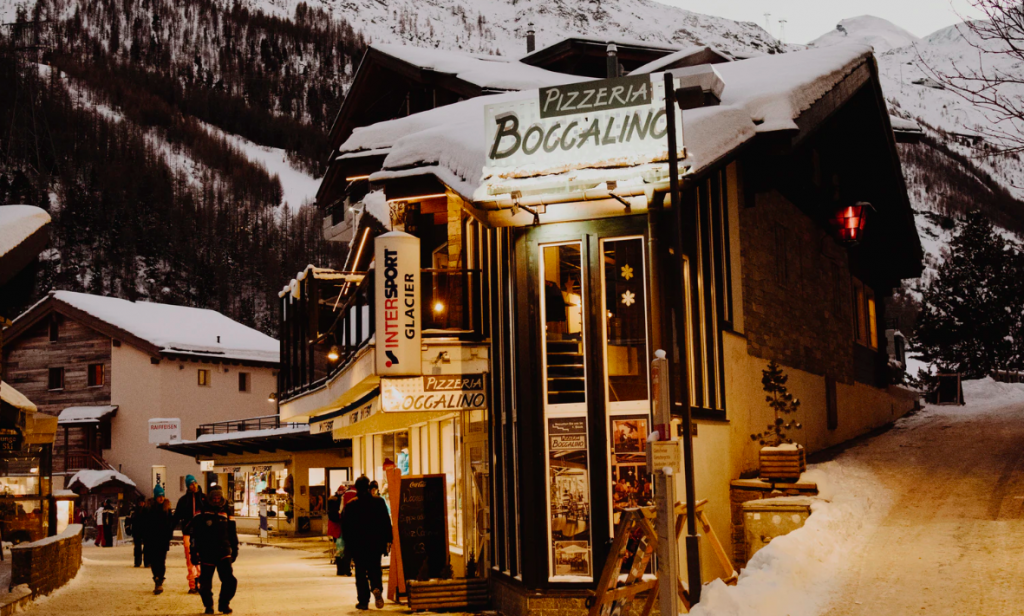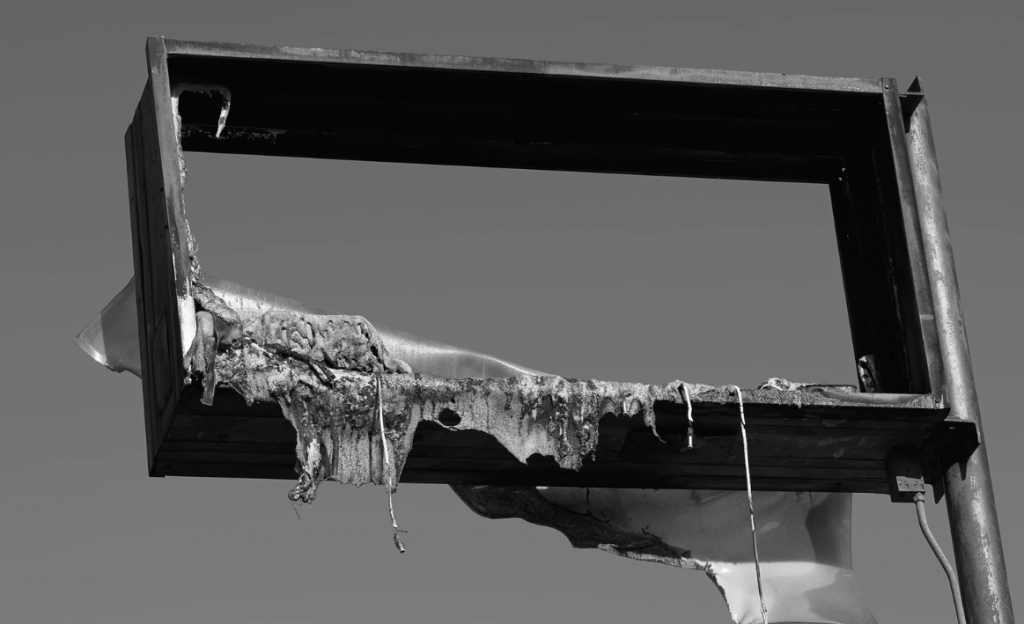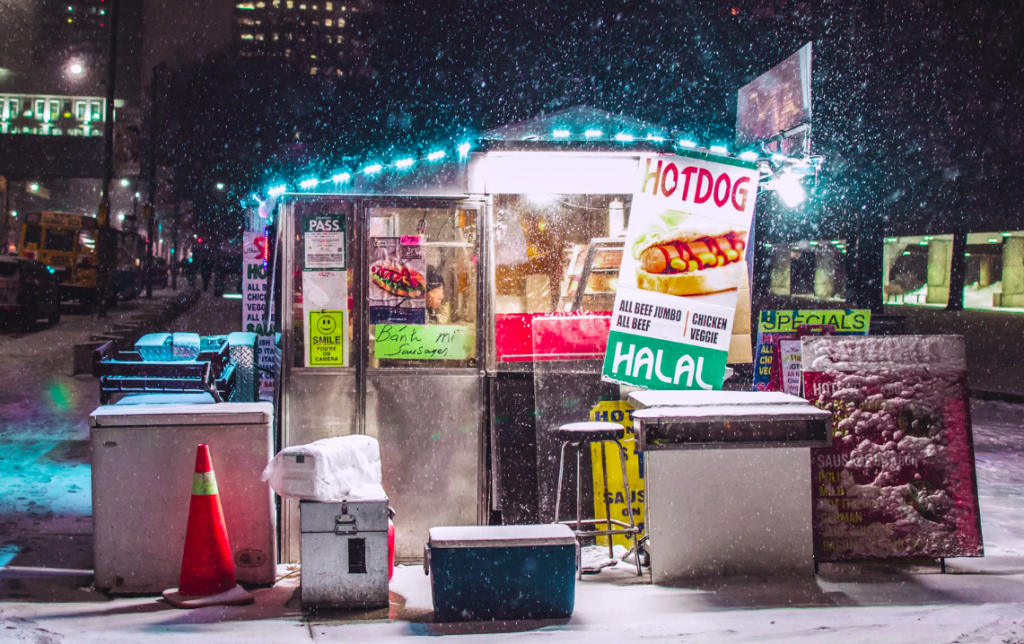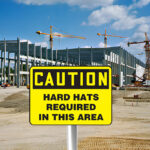Winter is slowly approaching. The temperatures are gradually dropping, and the conditions are becoming harsher. These changes can take a toll on everything in the environment, which includes your outdoor signage too.
Many types of signs are at an increased risk of damage caused by frost, wind, and snow. Now is the perfect time to start implementing protective measures.
Because we know how important signage is for any business, we are going to show you how you can protect your signs in cold and harsh weather.
The risks of cold and harsh weather
As you know, winter in the Northern hemisphere can be a bit rough. Depending on where you live, you have to contend with all kinds of conditions like snow, sleet, and wind.
For example, here in Michigan, winter storms are not uncommon, which can even include real blizzards. The 2019-2020 winter is expected to come with an “arctic cold.” On average, it is about 27 °F. But the temperatures can drop lower.
Sounds chilly, right? Let’s look at the specific conditions you need to be concerned about.
Weather conditions to watch out for:
- Fog: It is basically a cloud that is floating at ground level. Typically, the phenomenon is more common when the seasons turn, especially when autumn changes to winter. Significantly it can cause moisture build-up.
- Rain: Once again, the main problem with rain is moisture. It can seep in between the parts and panels of a sign. If the metal isn’t protected, it can rust. Unfortunately, it can also damage the quality of an image.
- Snow: There are two critical ways in which these frosty flakes can cause trouble. First, snow is pretty heavy, so it can weigh down your signs. Second, when it melts, it can leave your products wet and damp.
- Cold: Lower temperatures also pose a risk to signs. Extreme drops and increases in temperature are especially hazardous. Materials like plastics can crack if they heat up or cool too quickly.
- Ice and frost: Like snow, ice and frost can cause trouble in several ways. They can cause mechanical or physical damage to the boards and scratch the surface. Clearly, the cold that accompanies it is also an issue, not to mention the moisture.
Tips for protecting different kinds of signs
All of these conditions put your outdoor signs at risk. The more they are exposed to the elements, the bigger the potential problems.

Luckily, there are various steps you can take to keep them safe.
Due to variations in structure and material, the weather can affect different signs in different ways. That’s why we will cover some of the common sign types and how you can protect each one.
Banners
On the whole, banners are one of the most popular sign types. They are incredibly cheap, versatile, flexible, customizable, and easy to find. In general, they are one of those products that work as well inside as they do outside.
However, some harsh weather conditions might be too much to withstand. These signs are lightweight and cover a large surface area. Hence, banners take tremendous strain from any wind.
If not tied down securely, they can fly away. Or in some cases, the wind can rip them apart.
To prevent this, we recommend that you try some of these measures:
- Did you hang the banner over a street or corridor? In this case, only use heavyweight material and consider using steel cables to tie it down.
- Try to install the signs against a solid surface. In general, this will help to reduce the exposure to wind.
- If you did secure it against a flat surface, make sure it is sitting as tightly to it as possible. You can mount it with grommets and pull it tight to make sure there is as little space as possible for air to enter.
- Consider using bungee cords instead of rope to hang the banners. The material is slightly elastic, so it has a bit of stretch in high winds.
- Interweave the rope or cord through more than one grommet.
- Regularly check the lines and tighten them if necessary. Higher tensions mean less movement and less chance of ripping.
Digital signs
Electronic signs are brilliant inventions. These products have improved visibility and viewing distances during the night and day. But they are very vulnerable to harsh weather.
Moisture from rain, fog, and snow can affect the way they work. And temperature fluctuations can cause havoc to their hardware. On top of this, any conditions that apply force to the surface pose a risk.
Therefore, to protect your electronic signs, you should take the following steps:
- Check that your sign company used hardware that’s appropriate for outdoor use.
- Inspect and regularly maintain all of your digital signage. Pay extra attention to the seals and make sure there aren’t any spaces between their parts where moisture can seep in.
- LED’s for outdoor signs usually work optimally at a temperature between 59°F and 77 °F. The temperatures usually drop below that during winter. So ask your sign company if they have any heating or heat maintenance solutions.
- Overall, the most effective solution is to build or buy weather-resistant enclosures for your electronic signs. It should have a tight seal, good ventilation, heating systems, and consist of rust-resistant materials.
- Securely mount the sign so that it won’t be carried off by the wind. Aside from this, you don’t want any smaller parts to break off, either.
- Another critical step in thermal management is using suitable insulation. You can pack foam insulation into the sides and back of the enclosure to help to keep the heat in.
Metal panel signs
Another staple of the industry is metal panel signs. Businesses use them for a variety of purposes, from advertising to giving directions. Once again, they are relatively expensive and durable. Yet they aren’t immune to damage from harsh weather conditions.

Here are some strategies that you can try:
- Choose the right material. Aluminum and stainless steel are particularly weatherproof. Both of these are rust-resistant, so they should work well in areas where there is frequent rain and snow.
- If you use other metals like iron or bronze, you must coat it with a waterproof sealant that will prevent corrosion.
- You need to weld the panels together correctly. They should sit tightly so that they won’t be pulled apart. Plus, you should seal the connection so that it won’t rust.
- Typically, it works best to use a single metal panel.
Wood signs
Nowadays, businesses usually rely on metal, acrylic, and other fabricated materials for their signage. But there is nothing wrong with wood signs. You can still work wonders with these. However, they are often less resistant than some of the “newer” contenders.
You need to take several steps to keep them safe.
First, you should seal the wood with a laminate or water repellent. Usually, it’s safer to go with more than one coat.
Second, you can attach plastic or metal caps to the edges of the signs. The trim will keep water from seeping in and prevent the wood from warping and swelling. Aside from this, it can be useful for protecting the sign in storms with debris flying around.
Third, you have to remove rot, mold, or mildew as soon as it appears. Inspect your sign every few weeks or after a few days when there has been heavy snowfall or rain.
More tips and tricks
Now we can look at some additional tricks that you can use with different kinds of signs and materials.
Commission high-quality signage
The better the quality of your sign, the better it will be able to withstand wear and tear and the ravages of harsh weather. Therefore, if you don’t want to replace signage frequently, make sure you hire a good sign company.
Outdoor appropriate
Moreover, you need to choose materials and designs that are appropriate for the outdoors. There is a reason why fabricators recommend specific products for outdoors use. You can’t always the same signs in the interior and exterior of your business.
Replace old products
Everything has an expected lifetime. You can take protective measures to prolong their usefulness. But eventually, you’ll have to get new. If you don’t want the boards to look worn out and shabby be sure to replace your sign once it is nearing its end.
Double up
Overall, you can reduce the risk of damage if you use several measures at once. While this may take more time and effort up front, it is a sensible decision in the long-run. There are a variety of weather conditions that can cause problems, and different strategies are needed for each.
Focus on the mounting
No matter what type of sign you are dealing with, you should make sure to mount it securely. The weight of frost, ice, and snow can distort structures, loosening or breaking parts off. Overall, wind can affect signage in much the same way.
Therefore, you need to pay attention to the way you install your signage.
Poles are one of the most durable ways to mount signs. Attach your board to more than one leg for extra security.
Preferably, you should choose metal for the material. Carbon steel is a fantastic choice as it can withstand floods, as well as hurricane-and-tornado force winds.
Besides this, it’s a good idea to fix the base of the structure in cement or concrete.
Prevent water build-up
This strategy is particularly essential whenever snow or ice is beginning to melt. The water can damage many materials, and the added weight can also become too much. In some cases, it can even wear away at the support structures for the sign.
Regularly clear away any water from depressions on the product. And consider installing a cover like an awning over it if the problem becomes excessive.
Preventing water build-up is vital in the case of freestanding signs or products that you install on the ground like monument signs. To do this, you should place them on well-draining soil. Or even dig a trench around them to direct the water.
On the move

Admittedly sometimes, the best solution is to take the sign away. Usually, this is the only guaranteed way to protect your posters from harsh weather. You can store the boards at night when the temperature drops or when a storm starts picking up.
If this sounds like the right plan for you, consider investing mainly in freestanding and mobile signs like A-frame sidewalk signs. Alternatively, you can install some wheels to the frame of the sign so you can roll it inside.
Aside from protecting the products, you can benefit from being able to relocate it as you see fit.
Plan ahead
Above all, don’t wait until it’s too late. Without a doubt, it’s better if you could implement preventative measures before the harsh weather strikes. Once the damage is done, you might only be able to slow its progress.
Use the environment
Last but not least, you want to use the features of the environment to your advantage. By doing this, you will be working smarter, not harder. You can exploit existing cover without needing to construct any additional structures.
For example, keep your eye out for:
- Trees
- Walls
- Roofs
- Surrounding buildings
Try to put your signs in spots that are less exposed but still visible.
Stay ahead of the game
The cold and harsh winter weather can cause significant damage to unprotected outdoor signs. This isn’t the only challenge. It can also make it trickier to install new signs.
However, business rarely stands still. Therefore, you should consider reaching out to expert hands to help you keep your signage in tip-top shape year-round.
But it’s not all bad news. The festive season is also on its way. This means that there are fun and merry times ahead. Plus, new opportunities for you to promote and grow your company. So check out: how to make your signage seasonal without spending a lot of money.




